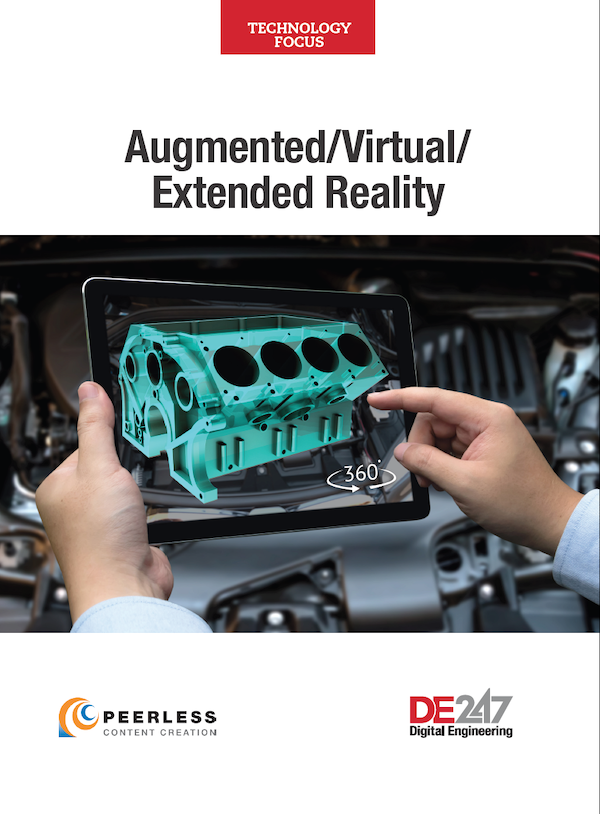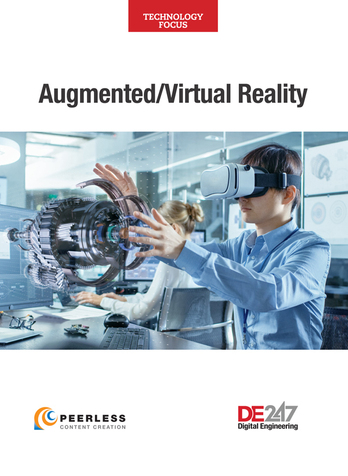Our New Reality: The Rise of AR and VR
AR and VR present many opportunities and challenges to help users engage and transform processes and products at the center of today’s engineering climate.
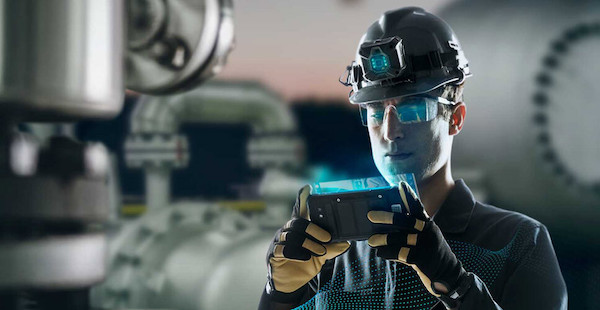
Using virtual and augmented reality tools helps attract and train younger employees and increase the capacity to obtain wisdom and apply it under a shorter learning curve through knowledge networks. Image courtesy of Librestream.
Latest News
October 1, 2021
Augmented reality (AR) and virtual reality (VR) have taken the stage as useful tools that work well with software and equipment to serve the needs of many industries and applications. We find both technologies in things like smart goggles, headsets, design simulations, and many other applications. They help human beings train, experience, solve problems, and perform tasks in alternate realities.
AR and VR technologies, however, do have challenges and present users and designers with pros and cons which must be considered and pondered in their deployment.
AR and VR: The Good Stuff
AR and VR provide remarkable capabilities and offer users numerous advantages. “Products and their manufacturability can be reviewed, evaluated, and in some cases tested before expensive prototypes and tools are built and committed,” says Kelly Malone, Chief Customer Officer at Taqtile Inc. in Seattle, WA. “Remote colleagues can collaborate synchronously or asynchronously, saving time and travel costs.”
Gary McAuliffe, VP Global Utilities for Librestream in Raleigh, NC, says illustrative tools that use AR in a remote work environment increase efficiency and productivity by giving individuals the capacity to do more, cut travel costs, and be more resilient.
McAuliffe points to the value of safety. “Safety is a big piece of this as well because many of the locations and equipment are dangerous so accessing a site remotely decreases the risk of an accident,” he says. “AR can also help put less people in potentially dangerous situations (like limiting radiation exposure in a nuclear plant) for shorter periods of time.”
McAuliffe also notes that AR and VR offers value in collaboration. “Collaboration between the customer and an engineering firm is a big advantage as they can share access and collaborate on a common platform,” he says. “Any firm that can offer this is at an advantage as we can customize the solution to the customer. For example, in the power [and] utilities industry, an engineer can do site walk downs remotely, and digitally capture interactions in the platform and send a report to the customer.”
Sajeel Hussain is the vice president and head of strategic alliances, partnerships, marketing and business development at CareAR. Hussain says AR and VR are advantageous in reducing cycle times from design to product launch. “Computer vision powered augmented reality enables a new 3D digital perspective that can make it easier to spot design flaws, missing components or unintended issues that might arise in servicing a new product,” says Hussain.
In addition, augmented on-site work environment with data and contextual information is improved as IoT devices are becoming more prevalent in many areas. “Augmented reality solutions can take advantage of this real-time intelligence to enhance AR guidance or self-learning,” Hussain adds. “Information form data repositories can also contribute to an AR workflow. For example, service history might steer AR diagnostics guidance toward a part where failure has repeatedly occurred.”
Andy Makely, a lead experiential developer for Dragon Army in Atlanta, GA, highlights numerous advantages of AR as the technology emerges and becomes more widely adopted.
He notes the versatility of AR and that its displays useful digital information superimposed over actual real-world objects in 3D space. In addition, AR may be run on mobile devices, allowing you to view an AR activity on-site instead of a controlled location. It can also be run in a web browser, allowing instant access for anyone to view it without having to install an app on their device.
Makely also notes the accessibility of AR as being significant. “If you're dealing with complex or intricate products, VR is an effective way to demonstrate individual components without the need for costly equipment, freight shipping services and availability of products,” says Makely. “Interactions within the experience can be tracked effectively to monitor how well someone performs in detail-oriented tasks, as well as overall completion metrics. For example, when tasked to tighten a bolt we can track if the user picks up the correct or incorrect tool and attempts to complete the task.”
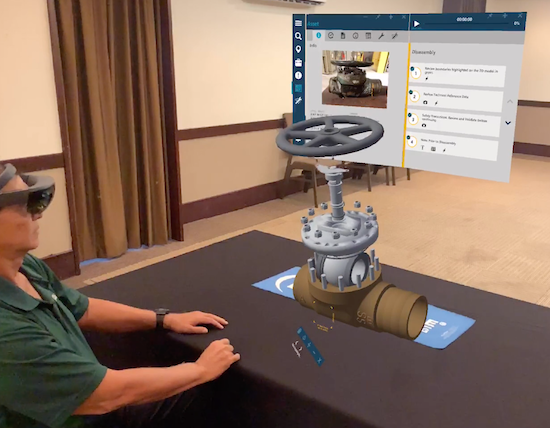
AR and VR: The Challenges
Along with the significant advantages and utility of AR and VR, comes challenges that must be confronted and overcome where possible.
Kelly Malone of Taqtile warns that the technology cannot wholly replace the up-front product design and design for manufacturing process. “Physical prototypes and hands-on evaluation are still necessary but can be significantly focused and enhanced with AR/VR,” she says.
Sajeel Hussain of CareAR says that with augmented reality physical touch or manipulation is required. User adoption can also be an issue with those that are technically cautious. In some cases, there is a learning curve associated with new equipment such as augmented reality supported wearable glasses.
In addition of effective use of AR requires strategic direction. For example, an augmented reality self-learning application might include the ability to call a remote expert for immediate assistance on a next step that does not make sense to an AR self-learner.
“An augmented reality solution provided added value when integrated within workflows and with other systems,” says Hussain. “For example, remote assist applications are frequently working with a field service management platform. IoT integration will provide real-time insight that can be integrated within an AR self-solve solution. It is important to consider the integration opportunities to enhance AR effectiveness.”
Hussain also notes that there is a learning curve in adopting AR. “The ability to replace verbal and paper-based descriptions with video enhanced with contextual graphical guidance is frequently transformational,” says Hussain. “This results in process changes, which usually provide significant benefits. However, there can be a significant ramp up as users become familiar with a new method of working.
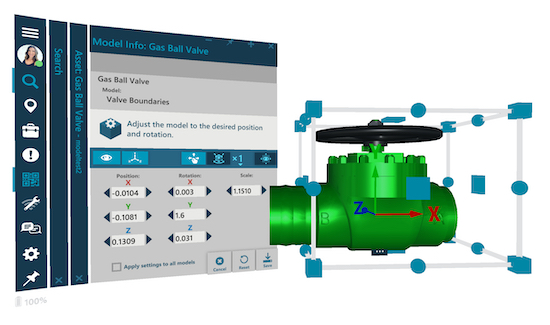
Launching AR and VR into the Future
The potential of virtual and augmented reality is significant. Its uses are many and its breadth of use within many industries is great.
“I ultimately see AR becoming a great asset in building remote learning programs that provide engineers with a hands-on experience with equipment from their homes or offices,” says Doug Stephen, President Enterprise Learning and Teamwork AR division, CGS (Computer Generated Solutions) in Brunswick, Canada. “Using AR platforms that can integrate with multiple types of devices will allow employees to train wherever they want, whenever they want. This approach has several benefits including improved ramp-up time for new employees, reduced travel requirements associated with classroom training models, improvements to product repair processes, greater retention of technical knowledge, reduced cost in training delivery and enhanced customer experience. As CGS’s survey found, 49% of business executives believe AR increased employee productivity and 48% saw an acceleration in training.”
There's a notable tie-in of VR and AR with the rise of digital twins in numerous markets. Such applications will be accelerated with the advancement of mobile networks, 5G, and the speed boost that AR and VR can provide in helping people and things learn faster and develop designs quicker.
“The ability to use digital twins and simulation in AR [and] VR is gaining steam,” says Kelly Malone of Taqtile. “New technologies like 5G and edge computing enable new use cases where access to data-intensive operations is feasible in-situ using HMDs and mobiles devices. So rather than minutes or hours to see the impact of a design change, these results can be viewed in-situ within minutes or seconds to support the evaluation of more design options and iterations. Sensor information (industrial internet of things – IIoT) can also be integrated and overlaid upon the real-world or digital twin, providing an added layer of data to inform design change impacts and decision making.”
Engage and Transform
For engineering designers and end users, augmented reality and virtuality has changed the landscape with new possibility in so many areas. For people, it improves two very important attributes that promotes innovation: an ability to engage and a strong capability to bring about transformational process change
“We have seen that augmented reality consistently engages users at a new level across a variety of use cases,” says Sajeel Hussain of CareAR. “Immersive' is frequently used to describe how someone being helped by a remote expert or self-learning experiences augmented reality. Contextual value works to create an immersive experience.”
As Hussain explains, computer vision is a technology foundation that captures each user’s exact physical device state. Personalization then goes to the next level as remote graphical or self-learning guidance is tuned for that specific device.
AR is an early way of validating everything from the right part being used to a “how-to” tool for onsite technicians. The many uses will produce numerous positive outcomes and results.
“AR replaces descriptions with a new form of video engagement,” says Hussain. “That thing' suddenly become amazingly descriptive due to graphical pointers, arrows and other animations that 'stick' within the AR experience. Probing questions, jargon challenges and even language barriers evaporate with graphical direction that is specific and contextual to the user’s current issue. New processes can suddenly emerge.”
Subscribe to our FREE magazine, FREE email newsletters or both!
Latest News
About the Author
Jim Romeo is a freelance writer based in Chesapeake, VA. Send e-mail about this article to [email protected].
Follow DE




